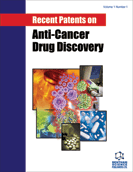
Abstract
Background: Isoliquiritigenin (ISL) is a licorice chalcone. According to CN104758274, CN101658513 and US009089546, it is claimed that ISL has anti-inflammatory, anti-oxidative, and anti-tumoral effects.
Objective: This study aimed to investigate the potential therapeutic effect of ISL in mouse melanoma B16F10 cells.
Methods: Sulforhodamine B (SRB) colorimetric assay was used to test the effects of ISL on proliferation. Commercial assay kits were applied to assess glucose uptake, lactate production and ATP levels. Measurement of apoptosis was involved with Hoechst 33258, JC-1 and annexin V-FITC/PI staining. H2DCFDA probe was employed to detect ROS generation. Quantitative RT-PCR and western blot were utilized to measure the mRNA and protein levels.
Results: ISL abated hypoxia-inducible factor 1 (HIF-1) stability and reduced a series of glycolysis-relevant enzymes expression, including glucose transporters 1/4 (GLUT 1/4), hexokinase 2 (HK2), pyruvate kinase M2 (PKM2) and lactate dehydrogenase A (LDHA). Exposure to ISL induced the mitochondrial membrane potential depolarization and increased intracellular reactive oxygen species (ROS) level. ISL could effectively inhibit proliferation and alleviate hypoxia in mouse melanoma B16F10 cells via inducing apoptosis and reducing the expression of significant enzymes in the glycolysis. ISL significantly inhibited B16F10 cell proliferation via inducing apoptosis, and alleviated hypoxia by recovering mitochondrial function and reversing high glycolysis.
Conclusion: Our findings propose that ISL can be a promising therapeutic agent for the melanoma via reliving hypoxia of microenvironment and targeting energy metabolism system of cancer cells. Consistent with WO2015079213 and WO2014084494, targeting glycolysis can be an effective means to anti-cancer.
Keywords: Apoptosis, glycolysis, hypoxia, isoliquiritigenin (ISL), mouse melanoma B16F10 cells, proliferation, reactive oxygen species (ROS).
 80
80 1
1 1
1 1
1


























